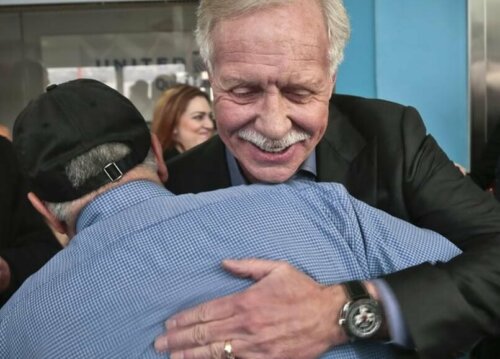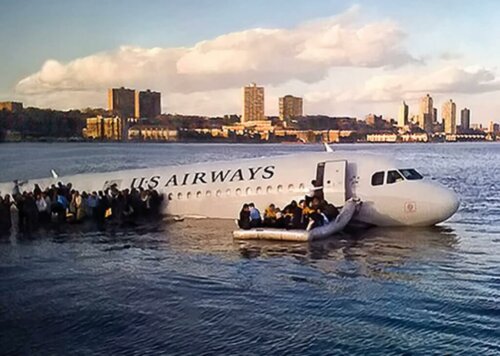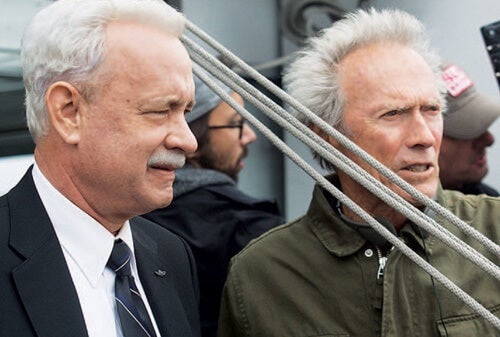The Miracle on the Hudson - A Story about Intuition


Written and verified by the psychologist Valeria Sabater
“This is the captain speaking, brace for impact.” This is how Chesley B. Sullenberger (“Sully”) addressed his 150 passengers before doing the maneuver known as the “miracle on the Hudson”. After colliding with a flock of birds and losing both engines, the highly experienced pilot ignored orders and followed his intuition. This led to a successful landing at the Hudson River.
This incident occurred over 10 years old but remains fresh in the collective memory. For many, it was the most successful landing in the history of aviation. For others, however, it was quite reckless. Still, others believe that the wisest thing would’ve been to return to the airport and not risk a tragedy with this feat.
Now, it’s precisely here where the most interesting part of this story begins from a psychological perspective. Experts in the field of sixth sense, intelligence, and intuition, such as Malcolm Gladwell, have studied this case and revealed that Captain Sully didn’t actually perform a miracle.
Instead, his feat was carried out with expertise. His crew described shortly after that the captain was unusually serene at all times. Despite the fact that his Airbus A320 had run out of engines, he behaved as if he had full control over his ship. And indeed he did.
The miracle on the Hudson happened in just over three minutes. In that short period of time, his mind assessed the situation, analyzed options, and carried out what he decided was most suitable.

The story of the miracle on the Hudson
This story began at 3:25 pm on January 15, 2009. It all started at LaGuardia airport in New York. The day was cold and clear and there was no impediment for US Airways Flight 1549 to take off.
In command was Captain Sullenberger, “Sully,” a 57-year-old former US Air Force pilot. He had over 20,000 flight hours behind him, but still, he couldn’t imagine he would have to go through such a scary experience. Within two minutes of taking off, a flock of birds hit the cabin.
They were Canadian geese. The cabin darkened and the passengers began to hear the impact of rather strong blows. Something unusual happened within seconds. Sadly, these animals collide with airplanes from time to time. What’s not common is for the engines to deactivate as a consequence. But this is exactly what happened!
Evaluating the best option
Subsequently, the aircraft began to descend, reaching a speed of 242 mph at an altitude of about 1640 feet. The controllers got to work at LaGuardia airport. They gave priority to Flight 1549 so it could return. However, to everyone’s surprise, Captain Sully told the tower he wasn’t going to turn around, disregarding their orders.
Seconds later, they warned him that the closest airport was Teterboro, in Bergen County, New Jersey. However, Sully, along with his co-pilot decided to continue his plan and disregard their instructions.

The plane lands on the Hudson River
Sully assessed the best course of action in just over a minute. Returning to LaGuardia airport would be reckless without engines. Similarly, going to the one in Teterboro wasn’t a very good strategy. This is because its runways are too short for a commercial jet as large as Airbus A320. The most suitable outlet was the Hudson River itself. Things were about to get interesting!
Only one large commercial aircraft had had a successful emergency landing in the entire history of aviation up until 2009. It was the Tupolev Tu-124 in 1963. This time, Captain Sully did it with unusual expertise that led to the “miracle in the Hudson”.
The miracle on the Hudson is an example of intuition, experience, and skill
Herbert Simon, a famous social science expert, pointed out that people with experience in a certain subject develop a highly effective and intuitive mind. Captain Sully is a great example of this. Now, curious as it may be, the months after that successful experience became hell on earth for the captain of the Airbus A320.
As Clint Eastwood showed us in the movie Sully, the investigations cast serious doubts about whether it had been a wise maneuver. Finally and after a rigorous process, they revealed that the captain used his extensive experience to take the best course of action, which saved 150 passengers and the crew.
It wasn’t a miracle but the maneuver of an expert
Indeed, to speak of maneuver is to detract from its protagonist. Thus, Malcolm Gladwell explains that these people are capable of reacting with high efficiency in times of need by using various strategies:
- Pattern recognition. Although they don’t always experience the same situations, these people can recognize similar stimuli from previous experiences and make use of responses that helped them in the past.
- These people possess high self-esteem and keep their cool during difficult times.
- Similarly, they use their expert intuition. Gary Klein, an outstanding behavioral psychologist, conducted an interesting study that revealed something striking. He pointed out that expert minds don’t ask themselves what to do when there’s a difficulty (they seldom hesitate). Instead, they understand the situation they’re in, analyze it, and then follow up knowing exactly what to do.

To conclude, it’s been over 10 years since the so-called “Miracle on the Hudson”. Remembering this story doesn’t only demonstrate the existence of true heroes but of people who fully trust their experience and intuition to perform bold feats.
All cited sources were thoroughly reviewed by our team to ensure their quality, reliability, currency, and validity. The bibliography of this article was considered reliable and of academic or scientific accuracy.
- Sources of Power, How People Make Decisions, by Gary Klein. The MIT Press. 1999.
- Zaslow. Jeffrey (2009) My Search for What Really Matters, by Captain Chesley “Sully” Sullenberger Harper-Collins.
This text is provided for informational purposes only and does not replace consultation with a professional. If in doubt, consult your specialist.








